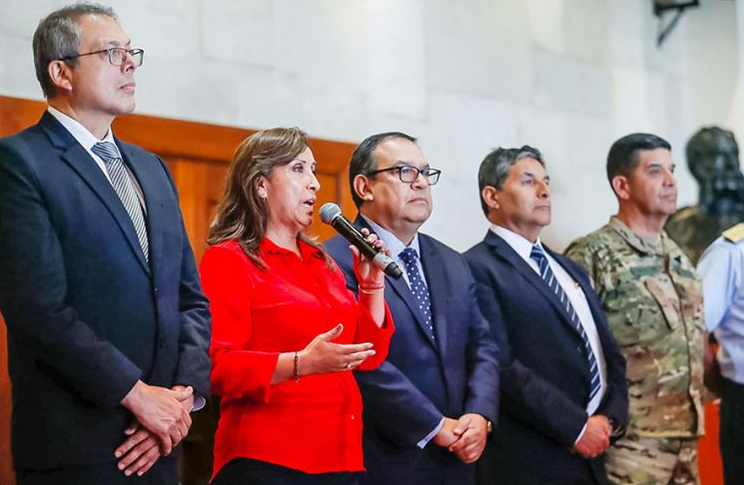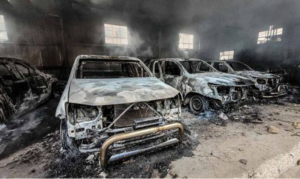
President Dina Boluarte declared a 30-day state of emergency nationwide on Wednesday. After a meeting with the National Security and Defense Council, at the general army headquarters, Boluarte said dialogue between all factions is the only way forward.
A week of increasingly violent protests, especially in southern Peru, have resulted in eight deaths and dozens of injured police and civilians. According to the Finance Ministry, Peru is losing up to USD 26 million a day because of the strikes and road blocks.
“We want to generate a dialogue with you, brothers and sisters, we know that the nation’s needs have been unattended for a very long time, we want to attend to them, but within peace, concord and brotherhood,” Boluarte said.
The armed forces have been assigned to protect strategic infrastructure at several points in Peru as well as the national highway network, and additional police troops have been sent to the provinces where protests and vandalism are greatest.
In Cusco, protestors blocked highways, attacked the airport and the Camisea gas installations and other natural gas plants, and destroyed private property and installations in the city’s main tourism areas. In Arequipa, vandals destroyed vehicles and other equipment at the Gloria dairy plant and the Coca Cola plant. Flights between Lima and both cities were cancelled until Dec. 15. In Andahuaylas, with the highest death toll, and in Apurimac, vandals set fire to the offices of the judiciary and other state offices.
In Lima, large numbers of police were deployed downtown, to control crowds and block access to the Congress and the main square and government palace.
Protestors include supporters of ex-President Pedro Castillo, demanding his reinstatement and his release from custody, and every facet of protest included the demand to close Congress and call for new elections.

In southern Peru, some of the protestors are illegal miners and similar groups, taking advantage to set fire to government offices that hold judicial and police documents, and many others have undoubtedly been encouraged by ex-President Castillo supporters. But Congress’ move to impeach Castillo and swear in Boluarte (who Congress wanted to impeach as well) was just the last straw in a long 18 months of poor governance and constant bickering.
The opposition in Congress had tried at least three times to vote to impeach Castillo since he was sworn in as president in July 2021, and constantly pushed to criticize and censure cabinet ministers — in 18 months, Castillo had five cabinet shifts and 71 different cabinet ministers. Congress was unable to reach the 87 vote threshold every time, until Castillo announced last week he would close Congress temporarily — within three hours, the Congress had 101 votes for the impeachment.
“People are in the streets because of the anger, the indignation they feel towards Congress,” said Martin Tanaka to La Republica daily. Tanaka, a political scientist and Catolica University professor, recognized that the protests include delinquents and gangs, “but that doesn’t explain the mobilization and protest.” Tanaka emphasized the need to isolate the violent actors, not legitimize them or call them terrorists.
“Sendero was defeated years ago and Pedro Castillo does not represent all Peruvians,” Tanaka said.
According to several political analysts, including Tanaka, President Boluarte and her ministers need to clearly explain the situation to the public, and ministers and special envoys must go directly to the different provinces to speak openly about its plans and the elections.
When Boluarte was sworn in last week, she said she would be president until the end of the term, in 2026. But increased demands for new elections and the violent protests led her this week to announce that, with the national elections board, the government would work to bring the date forward to April 2024. Today, Boluarte offered to find a way to hold elections in December 2023.





